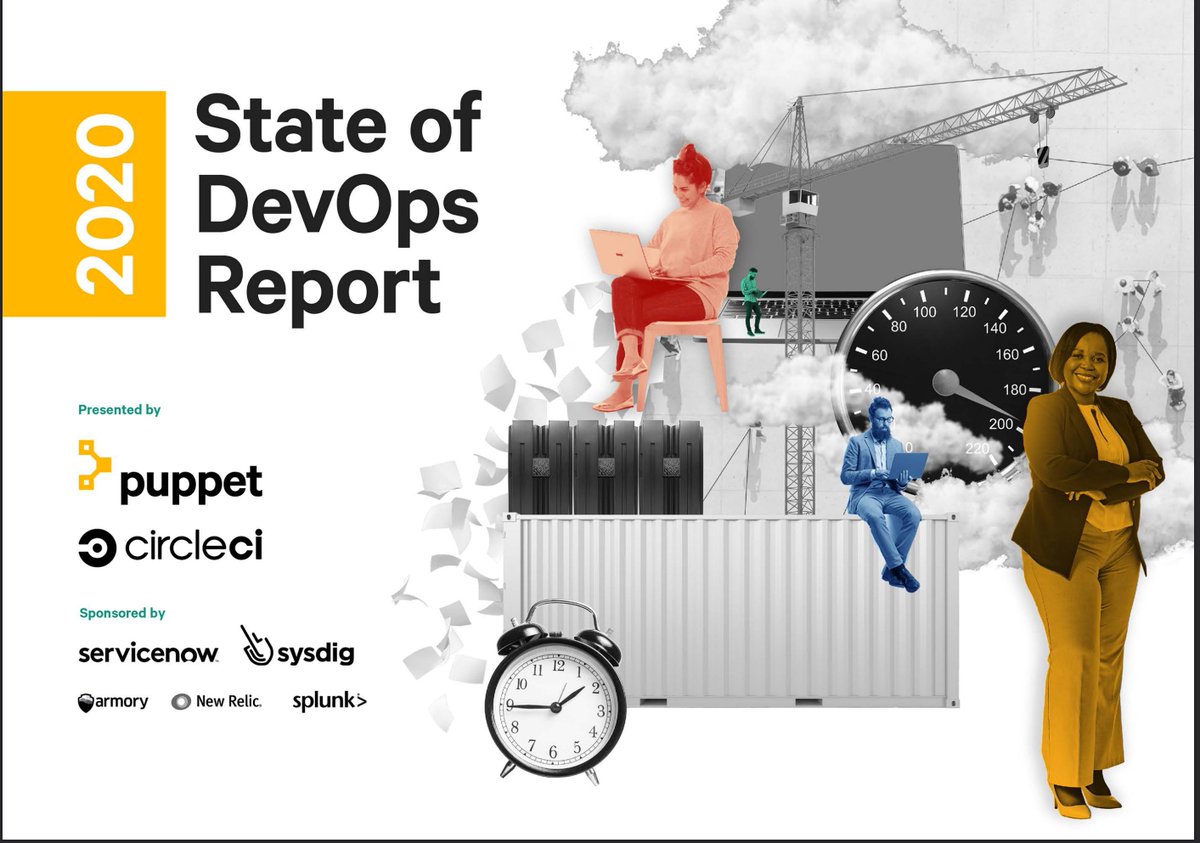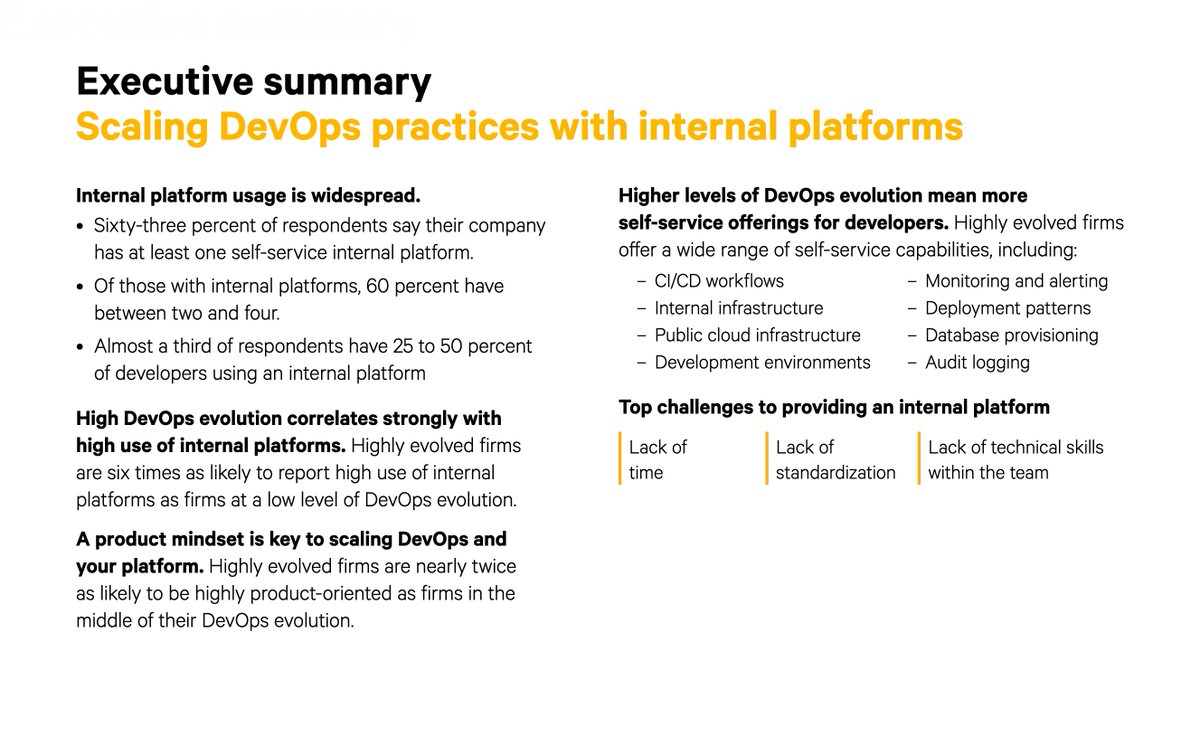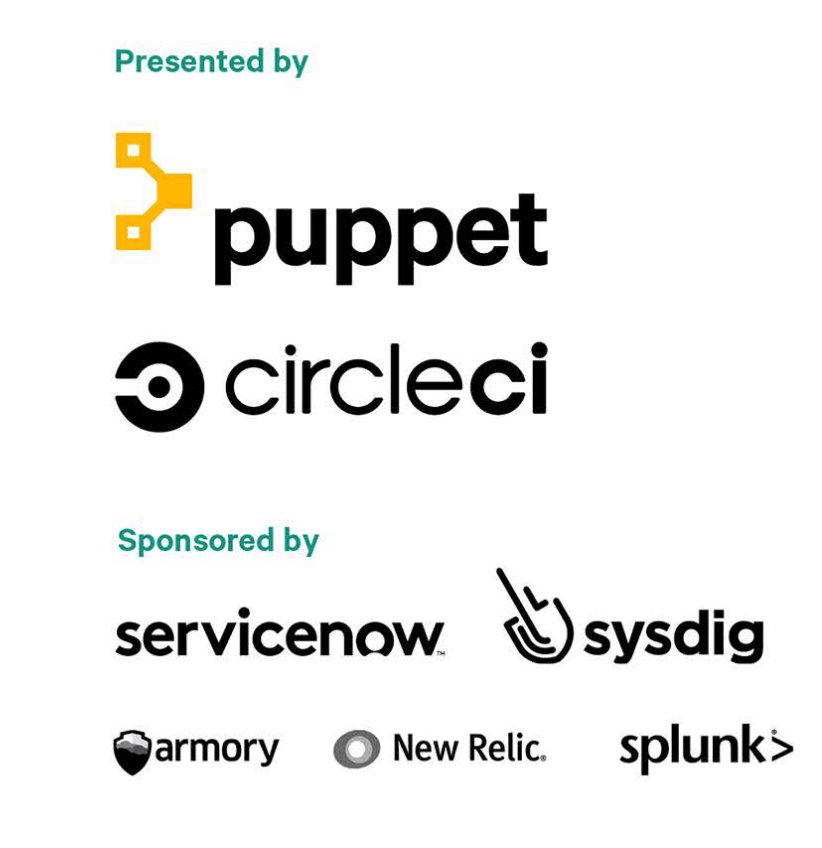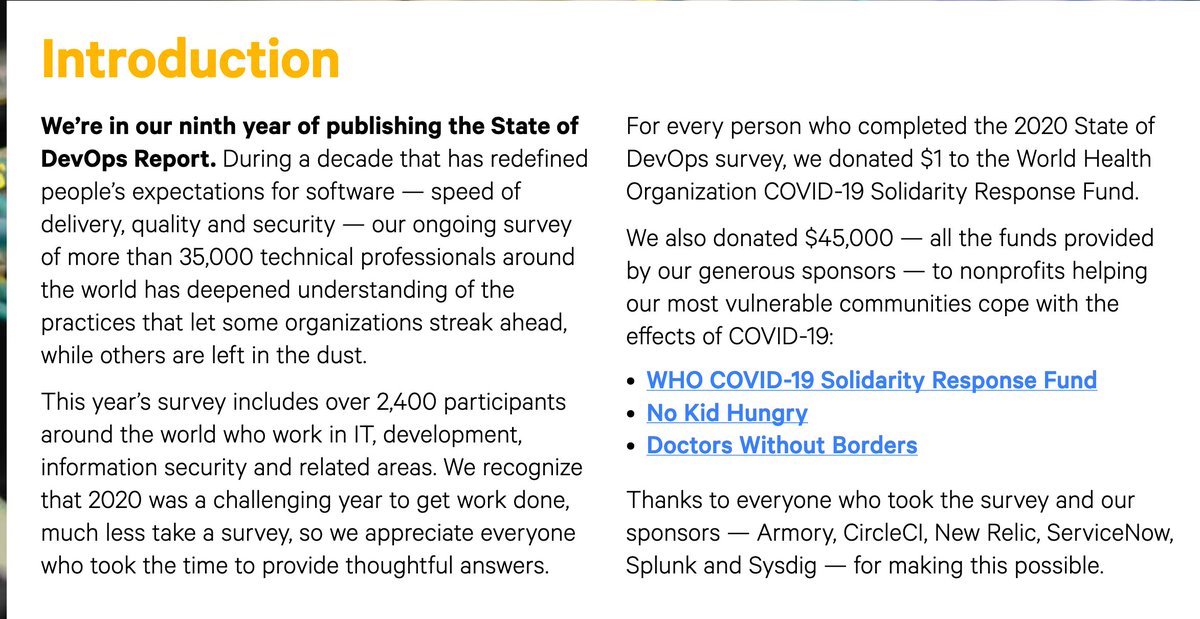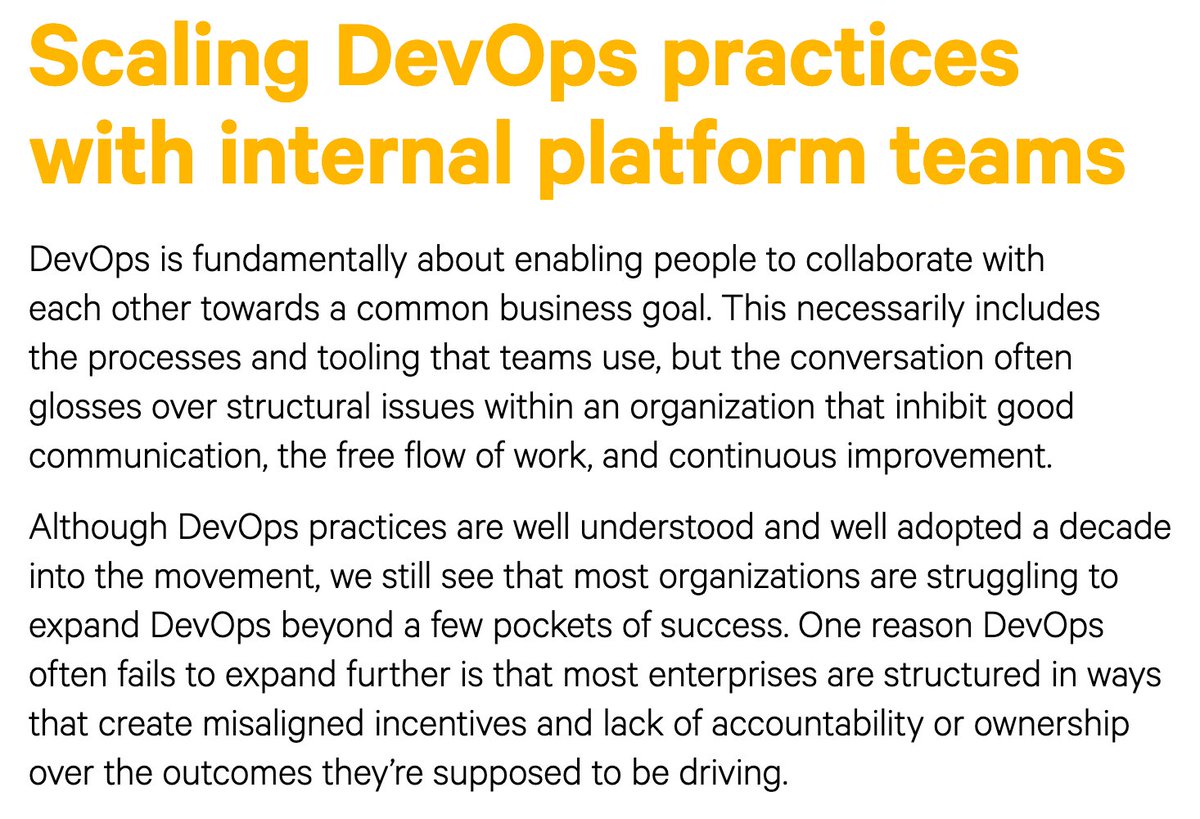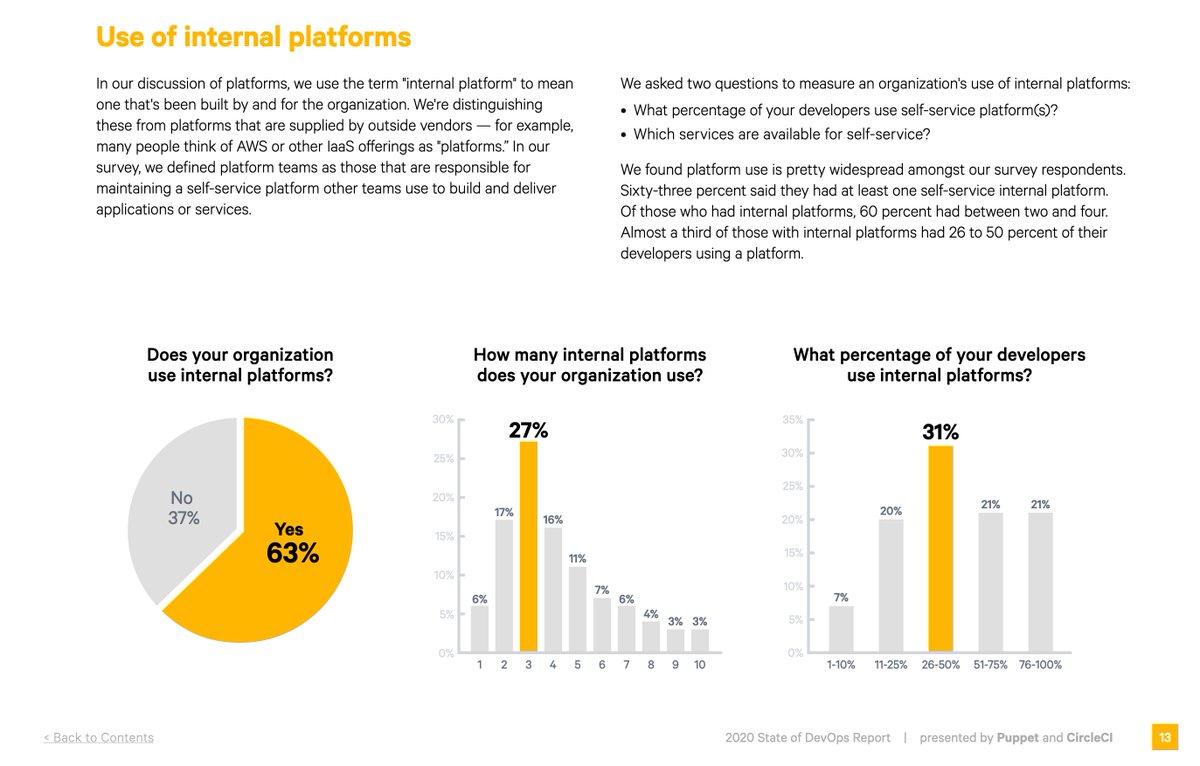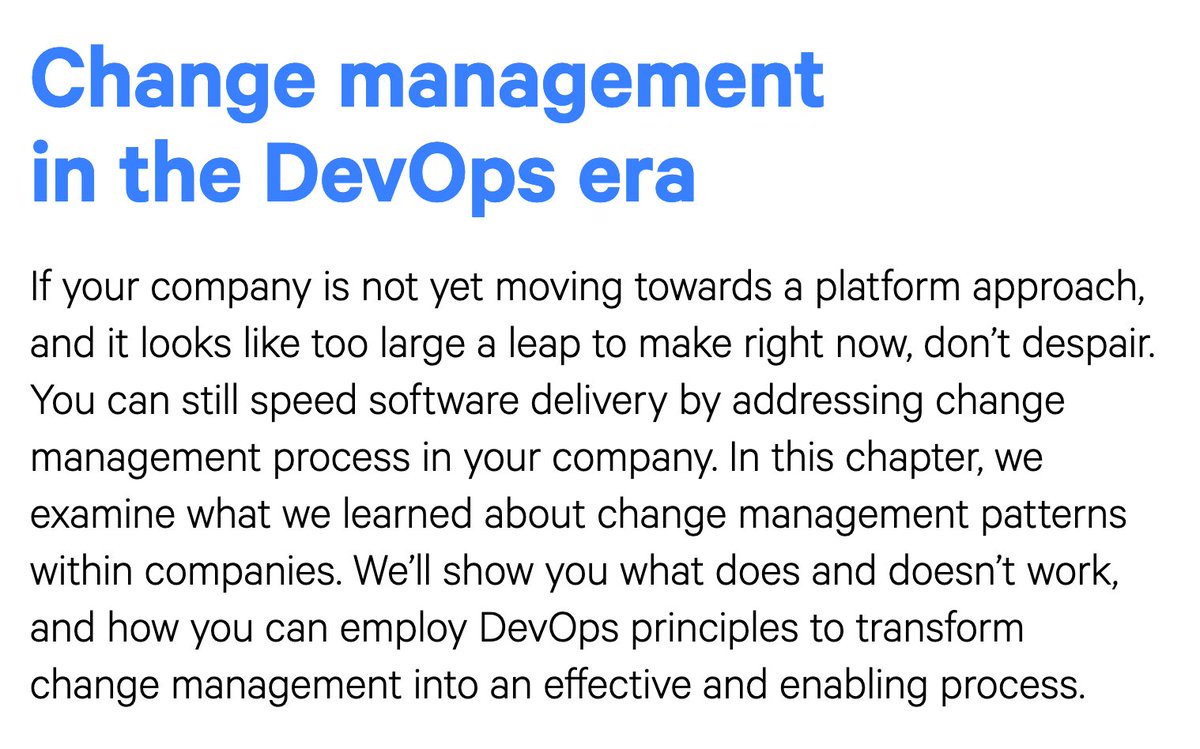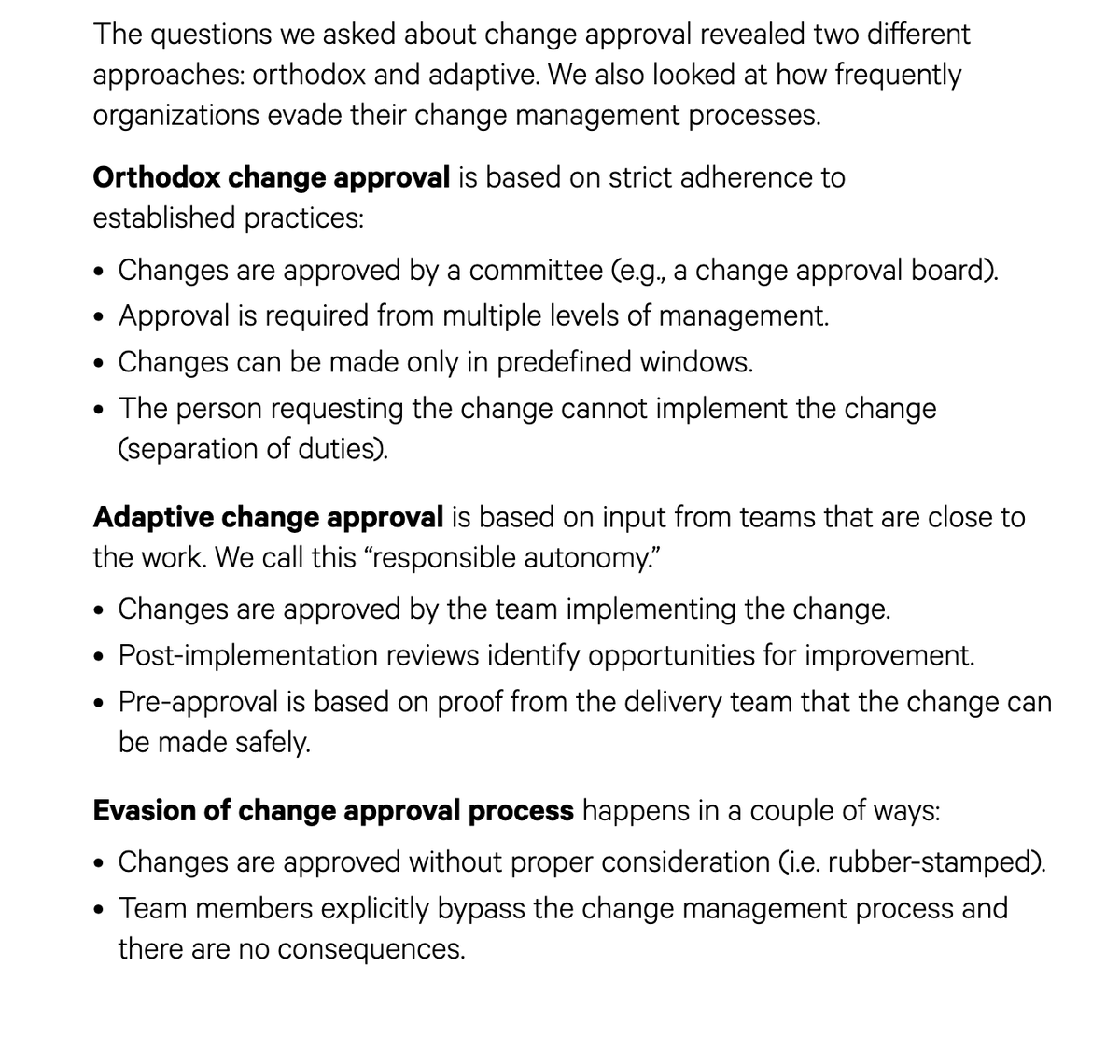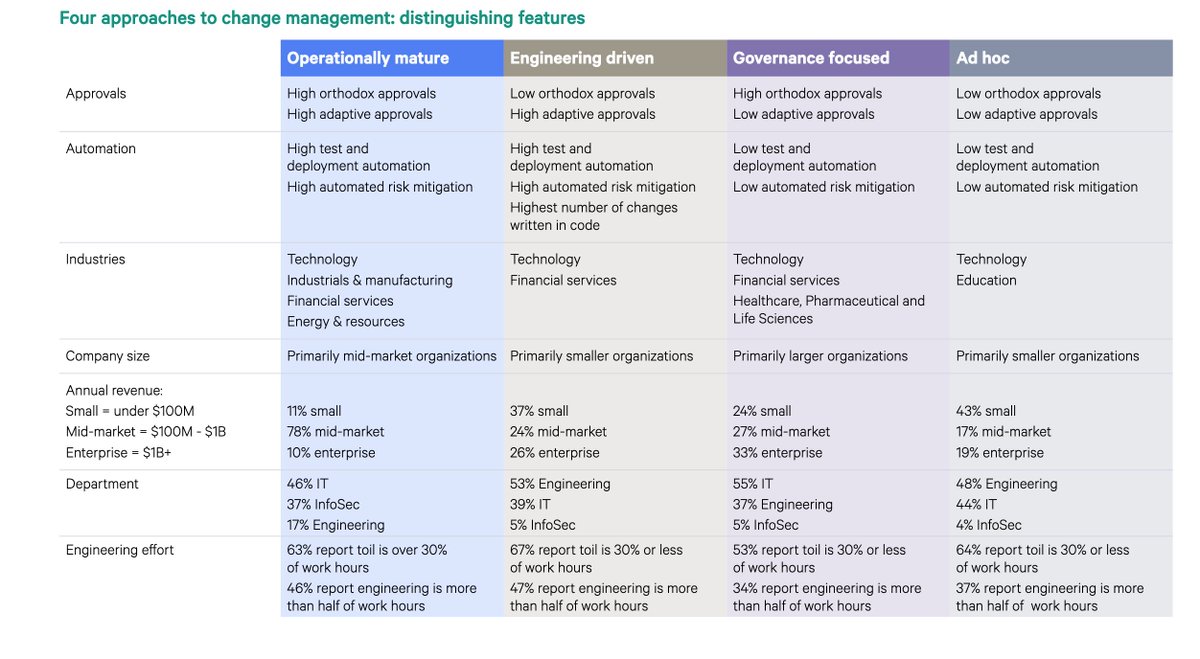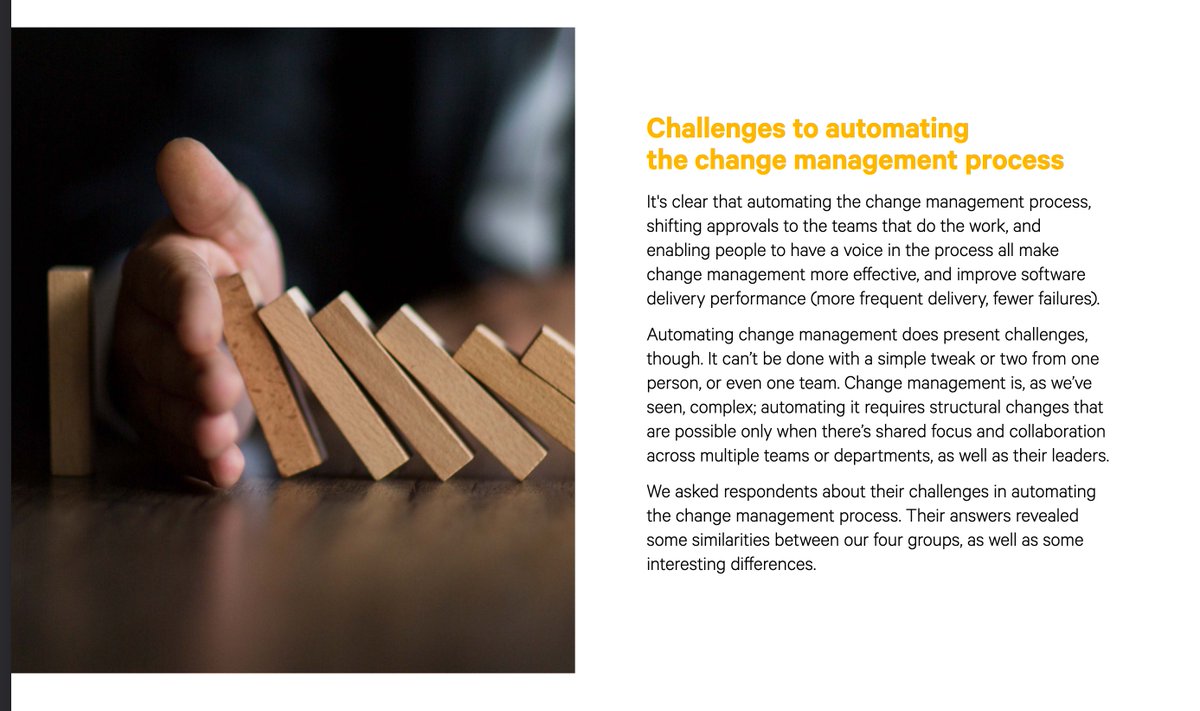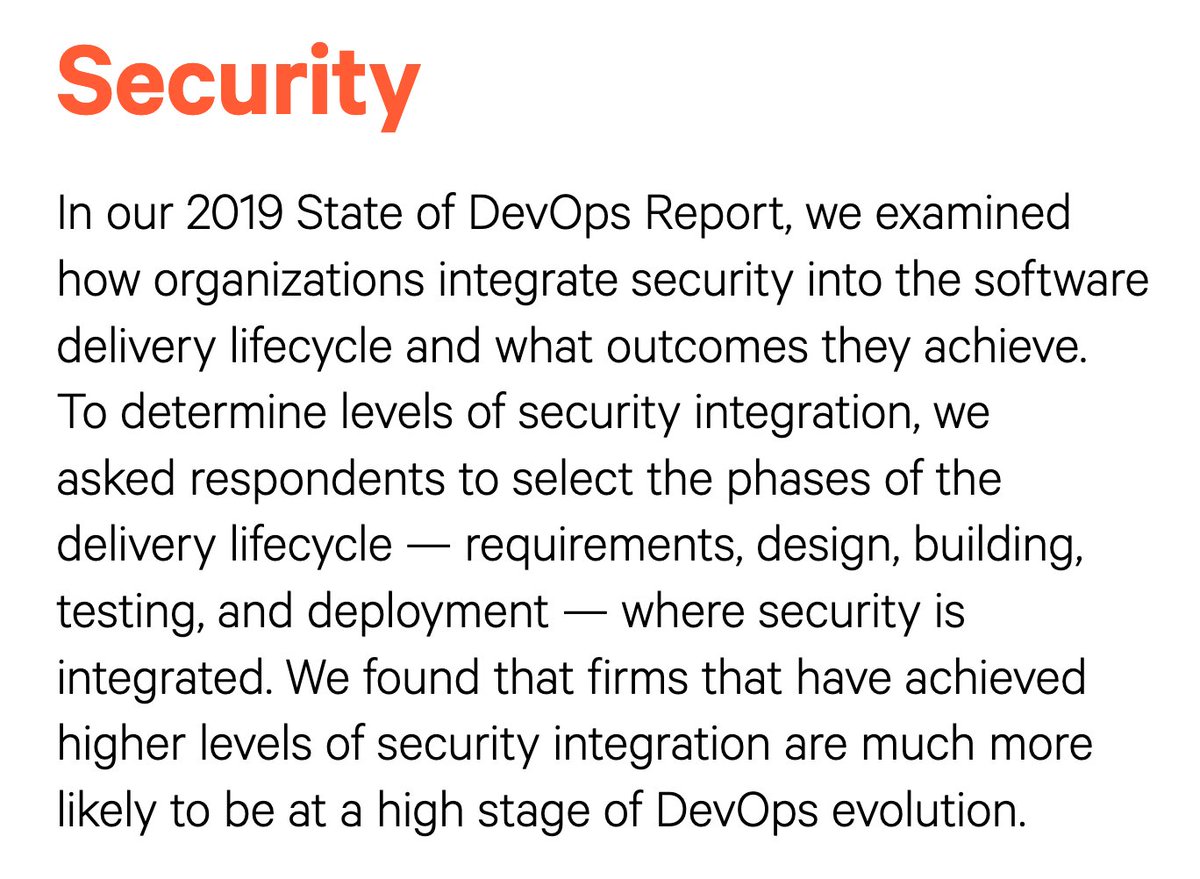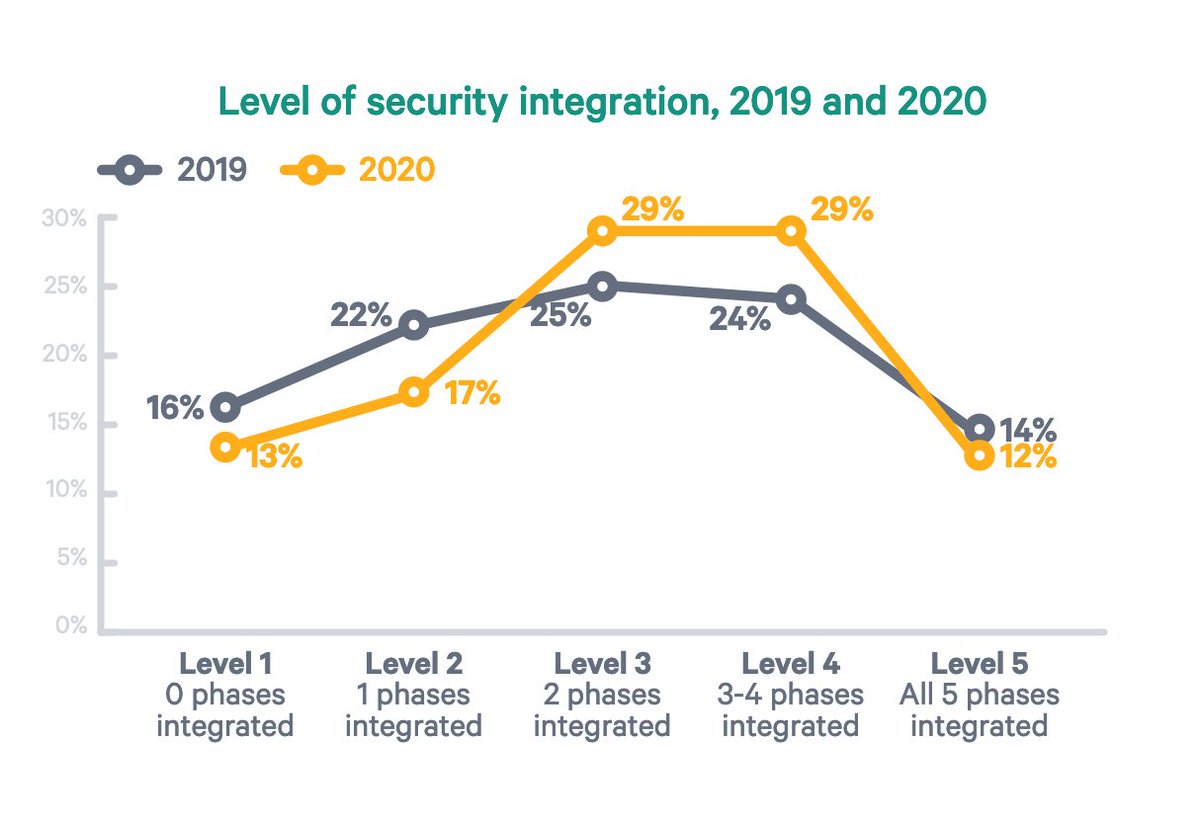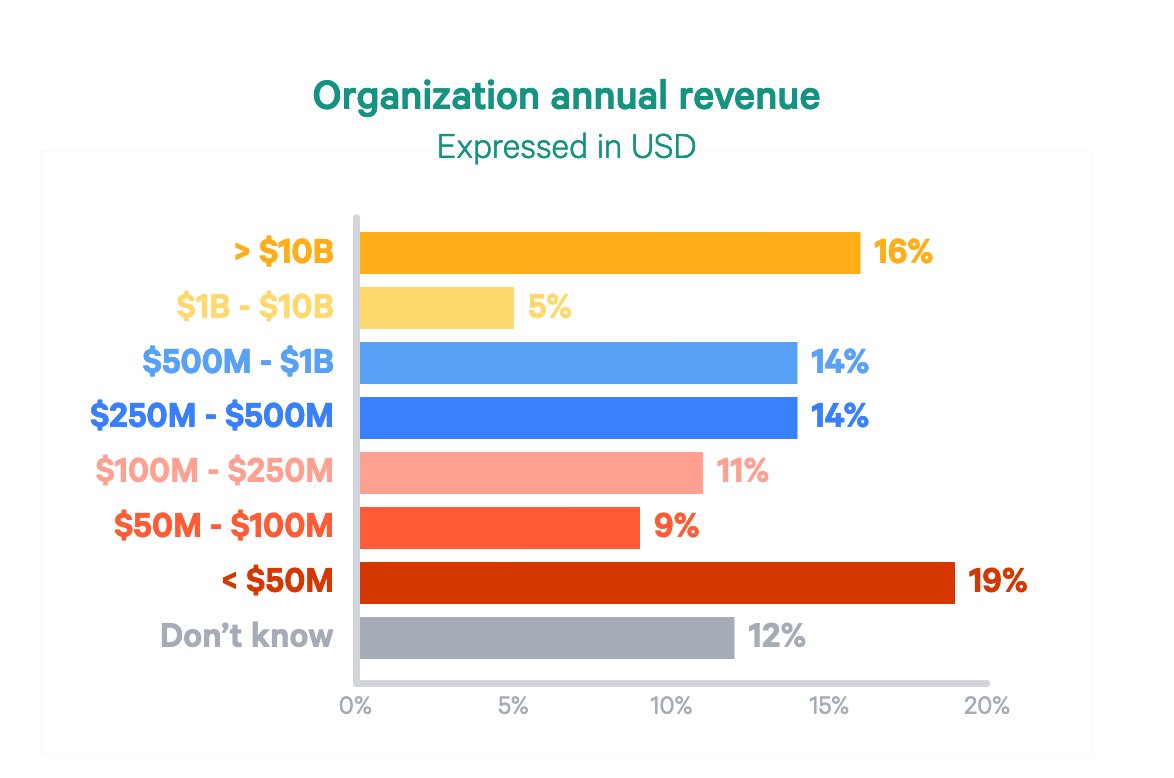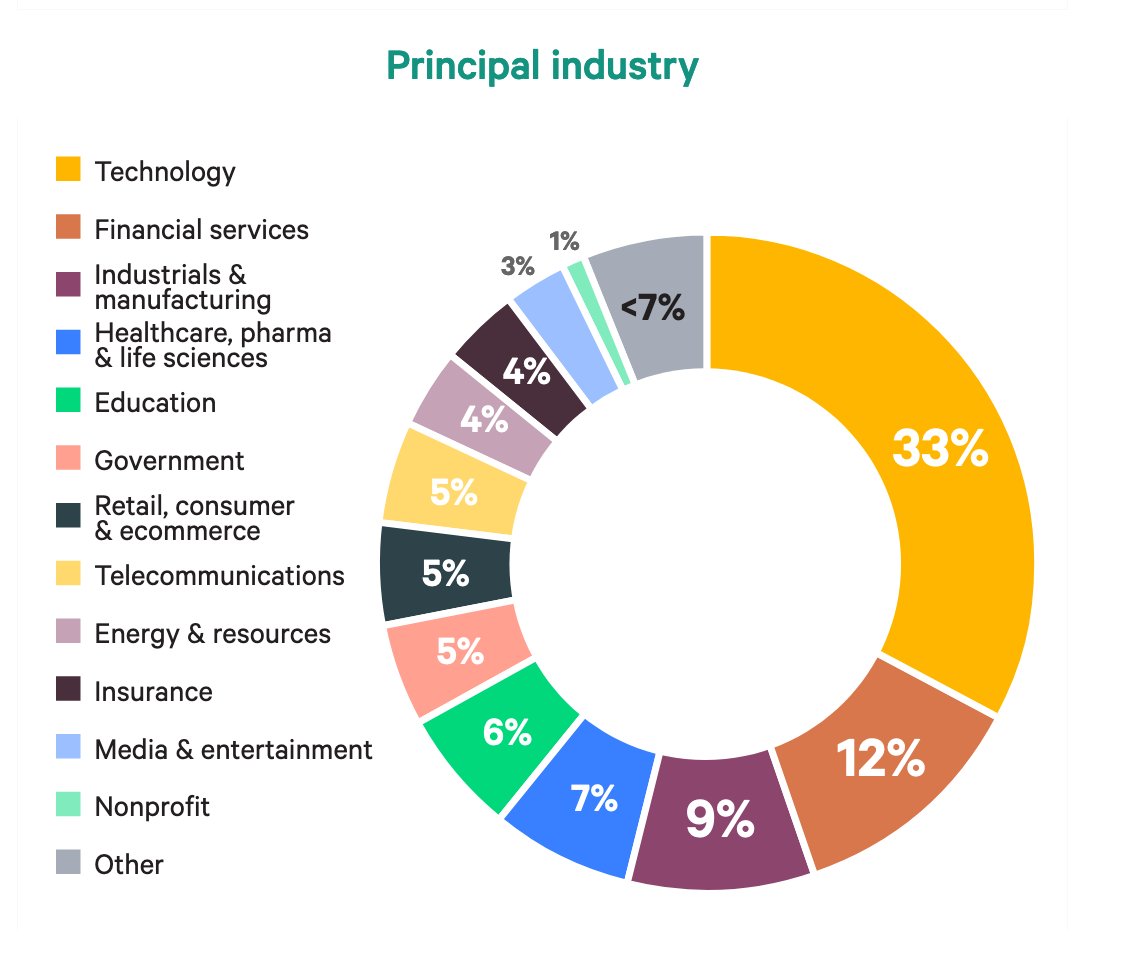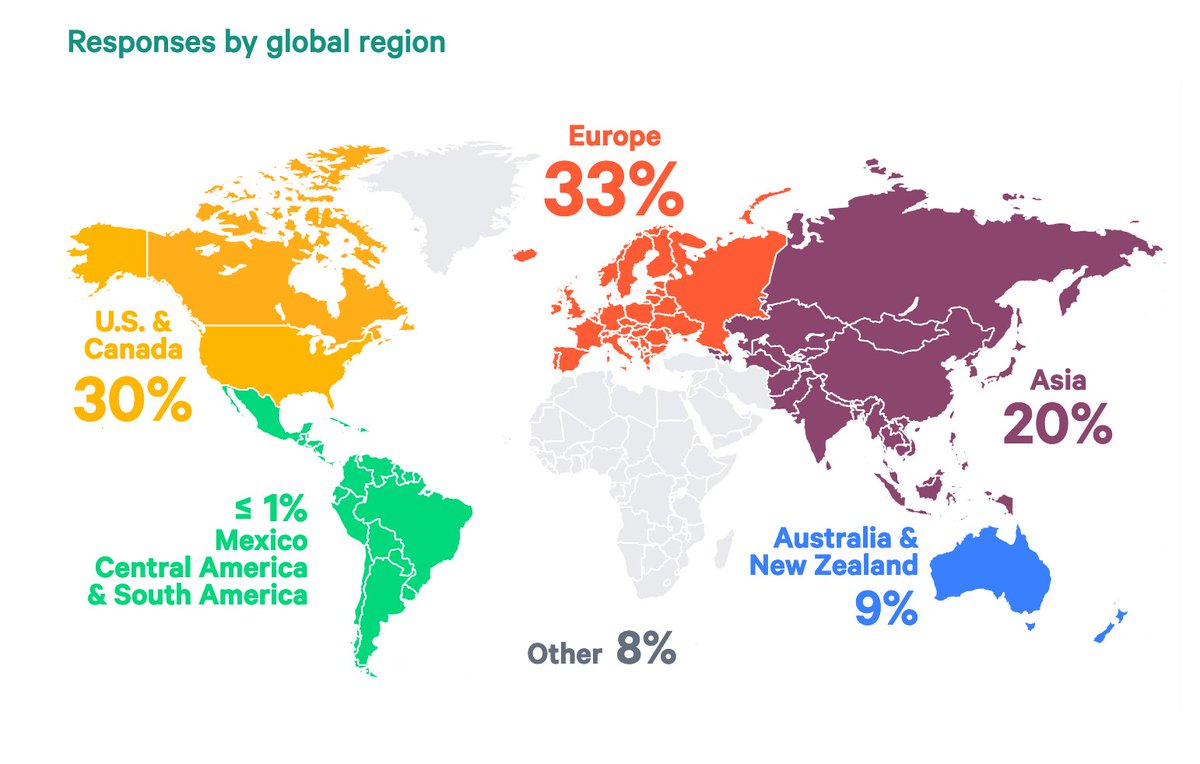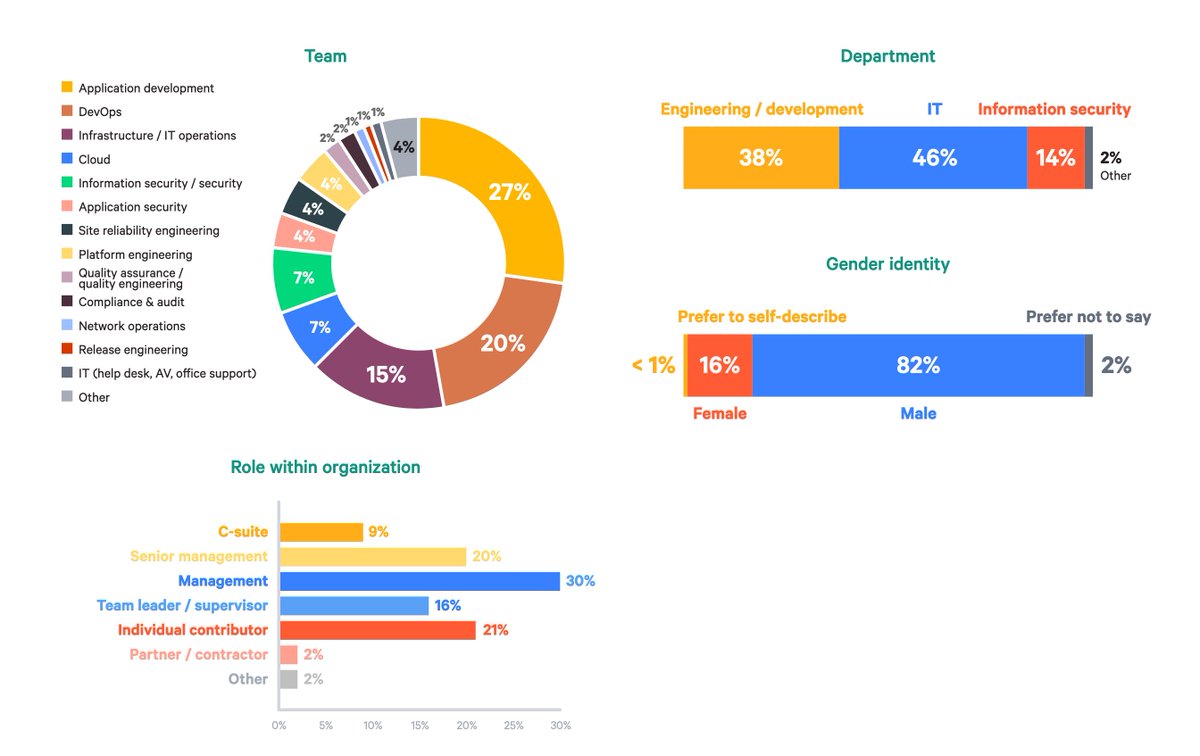Since Google acquired DORA and then Googled the State of DevOps Report, the @puppetize version is the last State of DevOps Report standing.
A thread. https://puppet.com/resources/report/2020-state-of-devops-report/
A thread. https://puppet.com/resources/report/2020-state-of-devops-report/
We start with @Puppetize shipping its sales culture. Why do companies need to know what state you're in? So the right sales rep gets your lead obviously.
The cover is evocative: a hipster dude who blue himself on top of a container, a Black woman with severe jaundice, and a woman who desperately needs to invest in a seating arrangement that's less likely to kill her.
The executive summary starts by talking about using Internal Platforms as if this were somehow a good thing. I grow suspicious, and then alarmed as I read it.
Those sponsors collectively threw $45K at this report--all of which and more was donated to three non-profits.
Gotta say, that's a stand-up move by @puppetize.
Gotta say, that's a stand-up move by @puppetize.
"Most enterprises suck" is something you'd expect to see more from, y'know. My Twitter feed, as opposed to "from companies hoping to sell to said enterprises."
Next we have a maturity model that has never been shown publicly before to my knowledge; it appears to have sprung fully formed from the forehead of some god.
There's that internal platforms stuff coming back to haunt us. It's like we've been bodily thrown through a single pane of glass.
There are many pages on how to properly conceive and structure an internal platform. The correct answer ("don't") is never mentioned.
The biggest obstacles to implementing internal platforms based upon what stage of evolution you're at.
Yes, if you're Google you need an internal platform. You are probably not Google.
Yes, if you're Google you need an internal platform. You are probably not Google.
A page and a half is given over to letting @stahnma (VP of Platform at CircleCI, which is most assuredly a platform company) talk about why platforms are important. They absolutely are if you're CircleCI. They are less important here at Twitter for Pets.
We finally get to my question of "wow, building a platform seems like an incredibly expensive use of engineering time, what if I have a business to run instead?"
The report pivots to talking about Change Management instead.
The report pivots to talking about Change Management instead.
A sad DevOps Truth is that there's always a change management process.
Don't believe me? Think back to the last major change that was made to your billing code and how that change got rolled out.
Bet it looks a lot like Waterfall, doesn't it.
Don't believe me? Think back to the last major change that was made to your billing code and how that change got rolled out.
Bet it looks a lot like Waterfall, doesn't it.
This chart helps explain a lot of what they're getting at. Tag yourself! I'm "Ad hoc."
Note that every company of every size defines itself as "a Technology company" but that's a fight to pick another day.
Note that every company of every size defines itself as "a Technology company" but that's a fight to pick another day.
Hard to blame them really. If they screw up, society crumbles / people die. "I wrote this code last night, let's YOLO it into production" isn't the attitude you generally want your retirement account asset manager to take.
The Emergency Bourbon has kicked in so I look at the picture instead of reading the words. Clearly you want to be the impermeable gate that stops bad things from getting into production.
By far my favorite answer to the "how much money does your company make a year" is "I have no clue."
More European responses than North American.
And that "Other" appearing to be basically Africa, the Middle East, and Greenland might benefit from some light retouching.
And that "Other" appearing to be basically Africa, the Middle East, and Greenland might benefit from some light retouching.
I attempted to take the survey myself but this set of questions left me paralyzed with indecision and I failed to complete it. 2415 people triumphed where I did not.
Thus concludes the report. Now, my thoughts!
This feels heavily weighted towards larger organizations than I'm used to working within. To me, a big company is anything over 200 people. I view the structures laid out herein as being constraining and slow; in practice they're very much necessary once you have scale.
It tells a story of companies striving to become more nimble long after process has ossified their ability to adapt on the fly to things. The "Ad Hoc" cohort is actually not super great to be in (read the report, it's worth it).
I once had an analyst engagement where I was asked about building internal platforms. My response was a polite version of "laughing in their faces at the idea." It's investing energy into something that isn't likely to pay dividends for virtually anyone.
I may misunderstand the term as it's used here, but if you're building a wrapper around AWS services to make them accessible to your staff, stop immediately.
Not you, @awscloud. Get back to work; you're not done.
Not you, @awscloud. Get back to work; you're not done.
In all, the report's well done. One thing I'd love to see is the raw questions that were asked so I can disambiguate some of the more confusing things I see in the report, but overall? Not bad at all for a report done in a global pandemic.
I will now take questions from the audience.

 Read on Twitter
Read on Twitter
